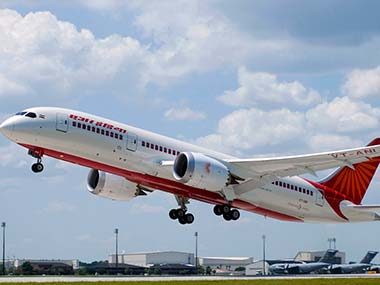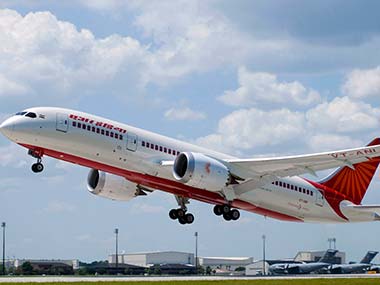This year, India’s airlines heaved a sigh of relief as jet fuel prices continued to be benign due to global softening of crude and domestic air traffic grew in healthy double digits. These twin factors helped airlines recoup some of their historical operational losses besides helping them get more bums on seats. But the relief, though welcome, would likely be quite inadequate to keep the airlines smiling in the coming months as the much-needed policy and fiscal incentives continue to elude them. Let me throw in some numbers here to illustrate how external factors, but not the Indian government, are helping in reducing airlines’ losses. Industry losses are expected to be $500-550 million for the year ending March 2016, which means a daily loss of close to $1.4 million by all the airlines combined. These are estimates by global aviation consultancy CAPA and are lower than the same agency’s estimates of $680-750 million made earlier in 2015. India is poised to become the world’s third largest aviation market in about a decade and perhaps it will attain this milestone despite little help from the mandarins in Rajiv Gandhi Bhawan, the nerve centre of aviation policy making in Lutyens’ Delhi. But how will a large aviation market sustain itself if majority of the players in it continue to bleed, either due to legacy issues (which is a major factor in state-owned Air India’s continued bleeding) or due to lack of fiscal incentives? [caption id=“attachment_2562056” align=“alignleft” width=“380”]  Representational image.[/caption] Why the Indian government has been reluctant to help airlines become viable can be easily understood by a simple truism: India has always seen flying as a luxury, never really coming around to the point that in today’s times flying has become a necessity. Well over a crore Indians take a train to their destinations each day when a mere 1.8-2 lakh are flying on the domestic network. This state of affairs is at least partly due to the heavy Central and state taxation that is levied on jet fuel – in fact, India is one of those countries which taxes jet fuel the highest in the world. Of course, the preference for trains is also due to the vast railway network compared to the more metro focused air services in India. Successive governments have been promising airlines a way out of this taxed-to-death Aviation Turbine Fuel conundrum but none has succeeded in persuading states to lower taxation. ATF accounts for about 40 percent of an airline’s operational costs. Recently, the AAP government in Delhi in fact hiked VAT to 25 percent. Remember, Delhi has the country’s busiest airport and airlines will have no option left but to lift expensive fuel from the Capital. State governments throw up their hands often in this matter, saying they will lose revenue if ATF taxation is brought down. In the end, airlines continue to pile losses despite a good business environment – the only exceptions to this being IndiGo and GoAir. Continued woes of airlines apart, the 2015 civil aviation calendar was an active one. Three new airlines took to the skies, one returned after a near-collapse at the beginning of the year and continues to improve performance. The country’s most profitable airline IndiGo went public, prompting a re-rating of the entire aviation sector and India cleared two safety hurdles – securing top safety ranking from the US safety regulator FAA after remaining in the doldrums for months and has just recently also passed the audit conducted by the international civil aviation organization (ICAO). Vistara, which marked Tatas’ return to the aviation sector after earlier aborted attempts, took to the skies in January 2015. A joint venture between Tata Sons (51%) and Singapore Airlines (49%), Vistara was the second investment by the Tatas in aviation – Tata Sons had, some months earlier, also announced a three way joint venture for AirAsia India. Vistara’s launch was a milestone for not only the Tatas but also because it came as a full service carrier, together with all bells and whistles in a market increasingly dominated by no-frills airlines. And because it was the first major investment by a foreign airline in an Indian one, barring AirAsia. Almost one year down the line, Vistara has carried a million Indians already even as it continues to expand fleet. Two other airlines, Air Paegasus and TruJet, also took to the skies as regional airlines in 2015, connecting southern cities to prominent metro stations. And SpiceJet made a dramatic comeback in January of this year, after erstwhile promoter Ajay Singh arrived as a white knight to save the moribund airline. The airline had shown profits now for three straight quarters till September despite curtailed operations. There is much potential in the Indian civil aviation market but it needs the right impetus, policy support and environment to grow. The much awaited and chronically delayed Civil Aviation Policy could be a part-answer to the industry’s woes. The policy’s key assumption seems to be getting every Indian on to a flight at least once in his/her lifetime. Lofty words for a country which has seen and continues to see aviation as a luxury. The policy is now expected to be unveiled next month. Besides suggesting framework for enhanced connectivity in India’s hinterland, it is also expected to take a call on other detrimental rules such as the 5/20. This rule has defined India’s aviation growth along with a total ban on foreign airlines investing in Indian carriers (which was lifted in 2012). This rule bars an Indian airline from flying overseas till it has completed five years of domestic flying and has a fleet of at least 20 aircraft. If the 5/20 restriction continues, along with the taxed-to-death ATF, it will surely sound the death knell for airlines wanting to expand in this market. Though incumbents IndiGo, SpiceJet, GoAir and Air India have complied with this restriction in the past, new airlines Vistara and AirAsia India will obviously stand to lose if 5/20 rule stays – since their expansion depends largely on seamless connectivity with the foreign partner and ambitious growth in overseas operations. The Civil Aviation Policy is widely expected to also recommend that all airlines not only participate in the ambitious regional connectivity scheme but also increase domestic connectivity otherwise. Again, this may stem from the need to get more remote locations on the country’s aviation map but the move is fraught with litigation and opposition from airlines since they already deploy a certain specified capacity on non-viable domestic routes. Another unwelcome move: flyers will have to shell out more from next year as the policy also proposes an additional 2 per cent levy on all tickets to fund regional connectivity. The Policy promises welcome tax sops for the MRO (Maintenance, Repair and Overhaul) sector and airlines participating the regional connectivity scheme though. So is 2016 going to be a better year that this one for India’s civil aviation sector? Airlines’ bottomline robustness will continue to depend on global crude prices, rupee stability and passenger growth. The airline which contributes to maximum industry losses – Air India – will likely continue to bleed even if its financial performance improves as per plan. With no firm blueprint with the NDA government to get Air India off its hands, aam aadmi will continue to fund losses of this carrier while funding its revival. Another matter of concern is the lack of emphasis of this government on creating aviation infrastructure. Though the policy speaks of enhanced regional connectivity, it has no firm plans for augmenting airport and other related infrastructure to support regional flying. Through 2015, the government went back and forth on earlier move to privatise four airports at Kolkata, Chennai, Jaipur and Ahmedabad. The proposal was finally scrapped. Then, an earlier decision to sell stakes in the Airports Authority of India (AAI) and Pawan Hans Ltd was also reversed. How will aviation growth be supported without adequate infrastructure creation, by keeping private developers out and overloading AAI – this remains to be seen. If India does manage to draft a sensible Civil Aviation Policy with initiatives for short, medium and long term growth of the sector, the country’s aviation journey may not see as many air pockets as in the past. But for the sector to grow to its full potential, it needs handholding by the policy makers.
India is poised to become the world’s third largest aviation market in about a decade and perhaps it will attain this milestone despite little help from the mandarins in Rajiv Gandhi Bhawan, the nerve centre of aviation policy making
Advertisement
End of Article


)

)
)
)
)
)
)
)
)



